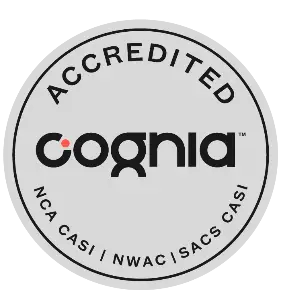Parent Notifications
When parents hear about an emergency at or near their child’s school, they want information as quickly as possible. In Canyons District, we’ve established communication protocols so that parents and guardians can receive emergency notifications in a matter of minutes. When an incident occurs, parents are immediately notified via telephone, email or text message — or any combination of the three. These notifications go to the phone numbers and email addresses that parents supply during CSD’s annual online registration process. Have you recently moved, or changed phone numbers? Do you prefer to receive text messages, instead of an email or phone call? Parents can update their contact information and notification preferences at skyward.canyonsdistrict.org.
Safety and Crisis Tipline
One of the most powerful ways to prevent violence is to leverage the eyes and ears of the community to report it in advance — and our schools have a high-tech tool at their disposal to facilitate that. Canyons was the first school district in Utah to adopt the SafeUT mobile app and tipline, which allows anyone to anonymously report acts of bullying and threatened violence, or to seek help for emotional crises, suicidal threats and addiction problems. The service is monitored 24 hours a day and seven days a week by school administrators and counselors at the University of Utah’s Neuropsychiatric Institute.
School Reunification Plans
An essential component of school emergency response plans is the reunification of students with their families and caregivers. The goal of any reunification process is to minimize anxiety and trauma for students while keeping them comfortable and safe. Each school within Canyons District has created a site-based plan describing the school’s evacuation routes, assembly points, and reunification plans. These plans establish a parent/guardian check-in location and have a system ready for checking out students. School reunification plans take into account designated Areas of Rescue Assistance for evacuating individuals who cannot exit the school building without assistance. School administrators train employees and students on the school’s evacuation plan through regular scenario-based drills throughout the year. Reunification points, and backup sites, are generally within walking distance of a school, though in some circumstances, schools will need to evacuate students further away from the campus. Often, reunification sites are nearby schools or local gathering places, such as churches or recreation centers. During a reunification, the District will enact emergency communications protocols to provide parents and guardians with directions to the reunification site and instructions for retrieving their student(s). In some cases, transportation is provided by the District’s fleet of buses. To minimize chaos and ensure the safety of students, District personnel will often be asked to help check-out students to authorized caregivers through an orderly process. It’s not uncommon to also have counseling teams on hand to provide assistance to anyone struggling with strong emotions.
Hoax Threats are No Joke
Bomb threats are rare, affecting fewer than 1 percent of the nation’s public schools on any given year, and 90 percent are hoaxes. But hoax threats are no joke. Since 2014, there has been a 33 percent increase in these types of threats against schools, according to the U.S. Department of Justice, disrupting schools and wasting precious law enforcement resources
— and that’s just bomb threats. In the age of social media, schools are witnessing an increase in all types of hoax threats. Every threat is taken seriously and thoroughly investigated by school administrators and law enforcement to determine its credibility. If found to be a hoax, those responsible can face serious criminal penalties. According to state legislation enacted in 2020, individuals who disrupt the regular schedule of a school by creating a hoax threat can be held financially responsible to pay for any costs or fees incurred by federal, state, local, private or individual entities in responding to the threat. Minors may be referred to juvenile court for perpetrating hoax threats. Canyons District encourages parents to talk to their children about the risk of posting and sharing hoax threats on social media, and urges anyone who sees something unsafe to report it through official channels: to their school or through the anonymous crisis and safety tipline SafeUT.

